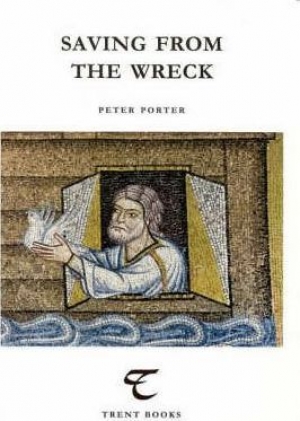Archive
Madeleine Byrne reviews 'The Black Butterfly' by Kathleen Stewart
When you think about it, public swimming pools are strange places. Semi-naked bodies saunter about, while others battle against gravity in speed-designated lanes. Perhaps it is no surprise that these sites of aqua profonda dominate recent fiction. Whether the pools are in Paris or Fitzroy, they act as metaphors for the human condition.
... (read more)Geordie Williamson reviews 'The Art of the Engine Driver' by Stephen Carroll and 'Summerland: A novel' by Malcolm Knox
If history is a graveyard of dead aristocracies, the novel is their eulogy. It is now, for instance, a critical commonplace to explain the young Proust’s entry into the closed world of France’s nobility as an occurrence made possible by its dissolution. Close to death, holding only vestigial power, the fag ends of the ancien régime lost the will or ...
... (read more)Peter Steele reviews 'Saving from the Wreck: Essays on poetry' by Peter Porter
The cover illustration of Peter Porter’s selection of essays shows a mosaic from the Basilica di S. Marco, Venezia, in which Noah leans out from the wall of the Ark and releases the questing dove. The last words of the selection go ...
... (read more)Brian Matthews reviews 'Gould’s Book of Fish: A novel in twelve fish' by Richard Flanagan
Diane Fahey reviews 'Tigers on the Silk Road' by Katherine Gallagher
Tigers and ‘the Silk Road to Istanbul’ feature in Part I of ‘1969’, the opening poem in this volume, which traces a hopeful setting forth into the undiscovered spaces of Asia and Europe. It is playfully exotic even while the homeward pull of a relationship envelops perception like a cloudscape:
... (read more)Following True Stories, published in 1996, The Feel of Steel is Helen Garner’s second collection of non-fiction. It comprises thirty-one pieces of varying lengths. Longer narratives such as ‘Regions of Thick-Ribbed Ice’, about a hair-raising trip to Antarctica, and ‘A Spy in the House of Excrement’, about the outcome ...
... (read more)The episode of the refugees on the MV Tampa raised two separate problems, one moral, the other legal. To see both issues in perspective, it is useful to recall the facts that precipitated this unlikely crisis.
The refugees, most of them claiming to be from Afghanistan, embarked on a boat in Indonesia and headed for Australia. It began to sink. The master of the Tampa, quite properly, rescued them. He was about to take them to Indonesia when some of them threatened to commit suicide if they were not taken to Australia. He considered that many were in need of urgent medical help. He sailed towards Christmas Island and radioed for help, but none was given. He was asked to turn away, but considered the risks to life too great. Thus it was that 450 refugees found themselves in Australian territorial waters.
... (read more)The leaves of Tower Bridge are rigged to open
For any taxi I might chance to catch.
They say that when the ravens leave the Tower
I suspect that even his contemporaries found Matthew Flinders strange and not entirely likeable. His father hoped that, like his grandfather and himself, Matthew would become a surgeon, but filled with enthusiasm for adventure after reading Robinson Crusoe, the youth insisted on a career in the navy. He wrote to the woman who would become his long-suffering wife in a style that would have been stilted even then, one that conveyed his undoubted affection in such a self-conscious way as to leave the modern reader with an unpleasant sense of self-righteousness. Amid preparations for the Investigator voyage, Flinders told his father: ‘I have no present or future intention of marrying either [Ann Chappelle] or any other person, but leave England only wedded to my ship.’ Then, when his father declined to provide him with the funds he needed to underwrite the marriage he was in fact contemplating, Flinders replied peremptorily that his father should henceforth consider that he had four children rather than five.
... (read more)Paul de Serville reviews 'Colonial Consorts: The wives of Victoria’s governors, 1839–1900' by Marguerite Hancock
Nineteenth-century Victoria was reputed one of Britain’s most turbulent colonies. For more than twenty-five years, a liberal Legislative Assembly fought a conservative Legislative Council over reform of the constitution, control of Crown Lands, Protectionism and secular education. In the middle ground between the forces stood the governor, the umpire who was the Queen’s representative, the fount of authority, the conduit for honours, and the head of society, presiding over what passed for a court in Melbourne.
... (read more)





